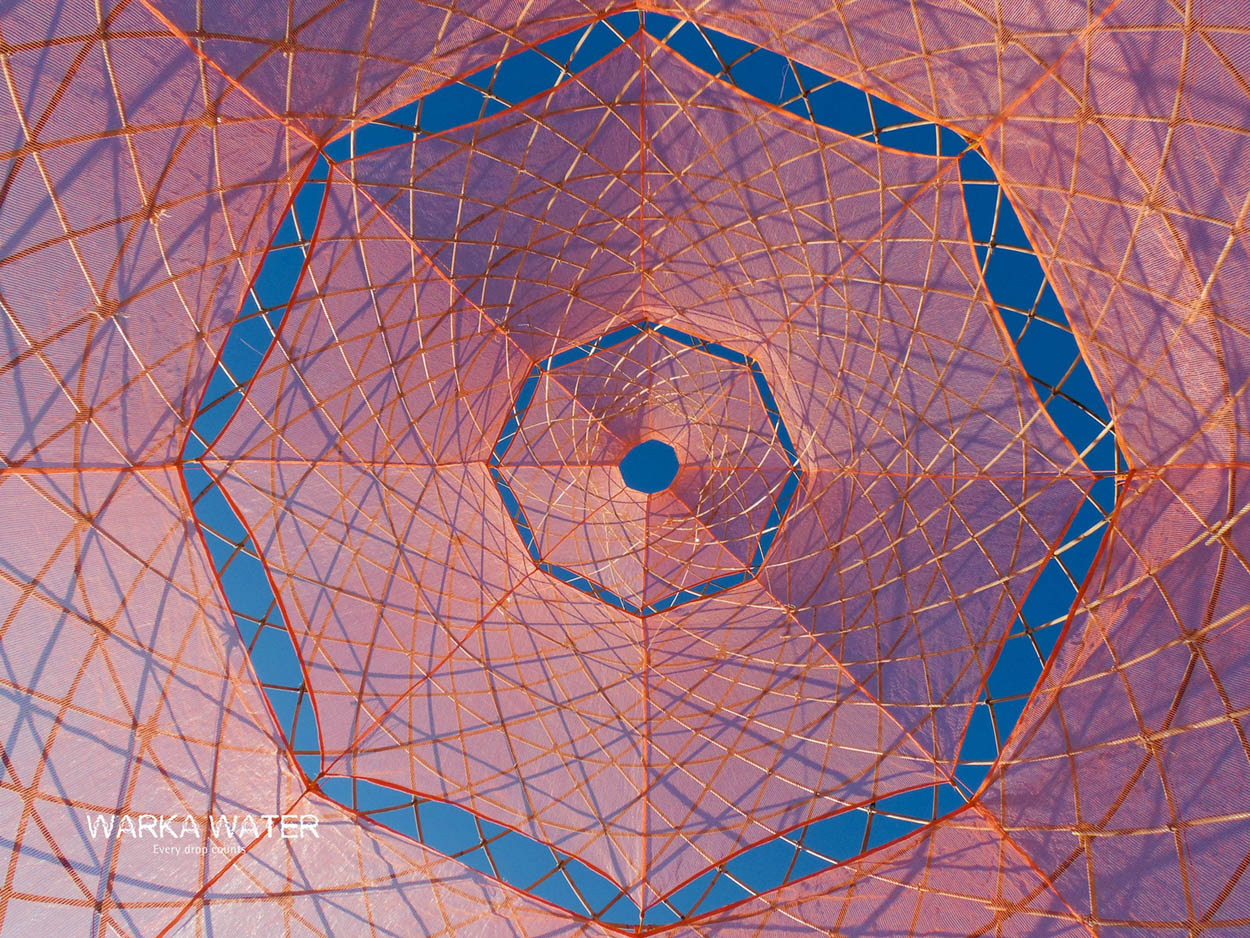
This story was originally featured on the Laka Architektura blog. To learn more about the Laka: Architecture that Reacts Competition visit their website lakareacts.com
All sorts of architectural and spatial actions originate from human needs. Warka Water, designed by the Architecture and Vision studio under the leadership of Arturo Vittori, an Italian architect and designer, is an example of a project that had its source in a clearly stated human need.
The society of Ethiopia constantly suffers from the lack of drinking water. According to Water.org, for the 99-million population of Ethiopia, 42,5 million of people do not have access to drinking water, and as many as 71 million of people cannot access proper sanitary facilities. In rural areas of Ethiopia, women and children are forced to walk huge distances, which take up to 6 hours, carrying heavy loads of containers, in order to access drinking water sources, which oftentimes are no more than shallow and polluted ponds or wells.
Warka Water is a spatial installation designed in response to this problem, which thanks to the choice of construction and finishing materials, as well as the shape designed accordingly, retrieves air and precipitation water and stores it in a container in the amount of approximately 50-100 liters per day.
Warka Water is well adjusted to the existing geographical conditions and is associated with the local cultural context – Warka is a tree, indigenous to the territory of Ethiopia, which is strongly related to local traditions. The project involves the potential of the local society as well as local materials and tools. The process of acquiring water is executed in a passive manner based only on natural phenomena, such as gravity, condensation and evaporation. Warka Water, apart from the technological and sanitary aspect, addresses also the cultural needs of the local communities by providing them with a meeting spot and a place for learning or engaging in leisure activities. Investigating nature with its millions of years of experiencing changes that has lead to the best possible adjustment of the living world to the environment, is a valuable base of knowledge on spatial structures, material solutions and principles of reacting to the environment. The most interesting human creations are often a reflection of nature-inspired mechanisms. The authors of the Warka Water project point out that the implemented design solutions are an outcome of a series of analyses of natural structures, such as the scutum of a Namib desert beetle, lotus leaves, spiderwebs or termite mounds. This interdisciplinary analysis has allowed to optimize particular elements of the project to achieve an exceptional, highly efficient solution, characterized by many aspects of operation.
Among other materials, a bamboo construction frame, netting, polyester cables and natural plant-based fiber cables have been used in the project. The project was developed in the process of creating consequent versions and prototypes. The 9,5-meter-tall Warka Water 3.2, has a base diameter of 12 meters and a 3000-liter water container. The netting, on which the water condenses, covers the area of 30 sq.m. The structure requires 10 days of 10 people’s work to be created and about 2 hours to be put together afterwards. Its total mass is approximately 80 kgs and the execution cost in Ethiopia is approximately 1000 USD.
Lack of safe drinking water is one of the world’s leading and the most urgent problems and it is a global responsibility to assure safe sources of water for every community. According to WHO (facts from June 2015), 663 million people rely on unimproved sources, including 159 million dependent on surface water, at least 1.8 billion people use a drinking water source contaminated with feces. About 840 000 people are estimated to die each year from diarrhea as a result of unsafe drinking water, sanitation and hand hygiene. Almost 240 million people are affected by schistosomiasis – an acute and chronic disease caused by parasitic worms contracted through exposure to infested water. By 2025, half of the world’s population will be living in water-stressed areas.
Warka Water is an inspiring project, which pictures the sensibility and interdisciplinarity of architectural thought in the process of social regeneration. It is as well an example of thought-provoking design tendencies, where the designed object is simultaneously an integral part of the natural environment. Architecture is re-associated with the natural landscape by the materials used, the execution process and stages of exploitation. The objects evolve into solutions, which do not need to protect us from environmental conditions, but let us benefit from them fully, while maintaining the principles of sustainable development, respecting the environment and future generations.

